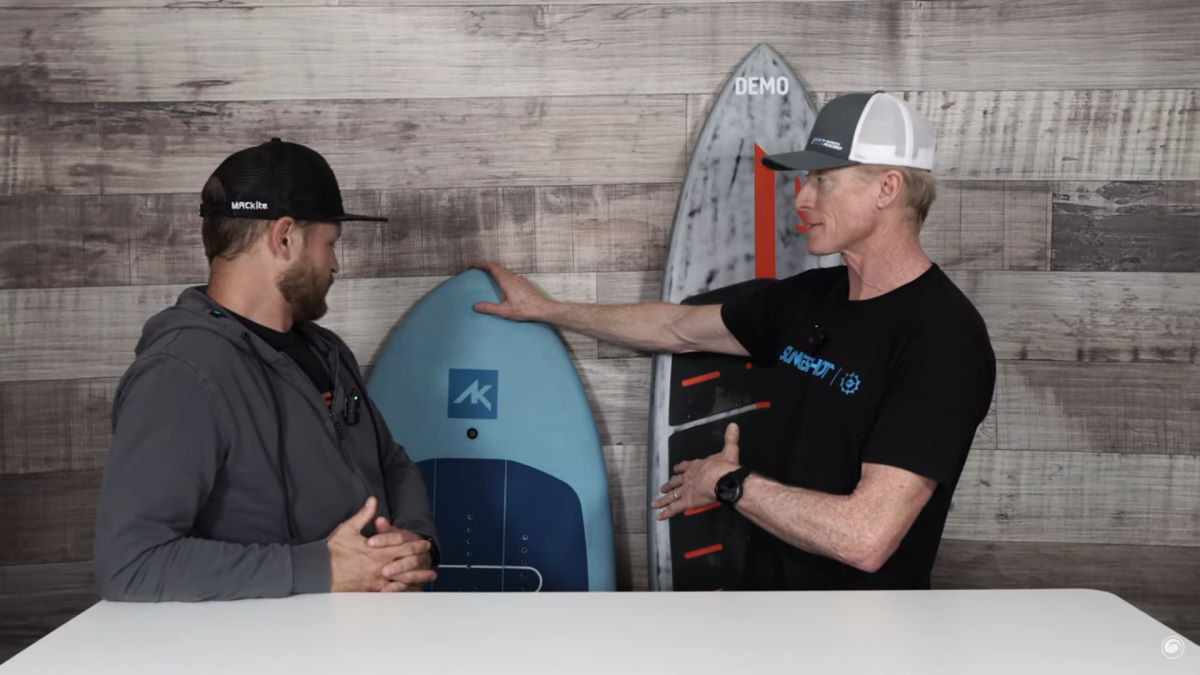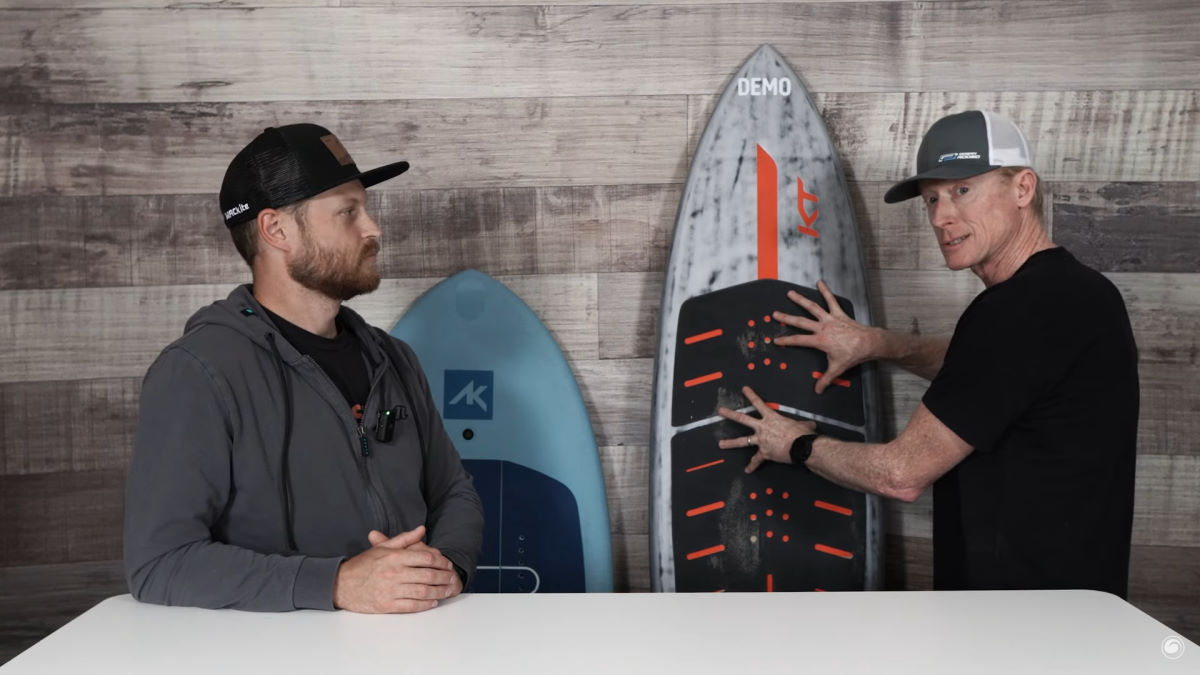Wing Foiling | How to Correctly Downsize to Your Next Wing Board
So you've gotten the basics of wing foiling down and are ready to get your next board. What sizes should you look at? Do you need a light and high wind board, or can you get away with just one? Jeff and Ryan are here to help you sort through all the options and get an idea of where you might want to go.
A lot of people learn on a board that's around 120 liters, then sell it to put the money towards their next board. They aren't a brand ambassador and don't work at a shop, so a single daily driver that works in most conditions is the most realistic option for most people.
Once you're nailing your jibes and tacks, you might feel that you want to go to a smaller board. Jeff and Ryan are both around 175-185lbs, and they enjoy riding a 65 liter board, which is a semi-sinker board at that weight. It's a good one-quiver board for them and works great at 15 knots and up. However, this was their third board and would be quite a jump for a newer rider.

They agree that an ideal second board would be something in the 90 liter range and around 5'6 long. You gain a lot of performance once you get under 100 liters, but you'll still have a lot of stability and a fair amount of buoyancy at that size. It's a good all-rounder and will help you progress.
A board in the 90 liter range can get up in conditions as light as 13-14 knots and still has some forgiveness. Once you start riding waves, you'll find that it's not too big or cumbersome. You can take on waves from knee to chest high on a board like that.
It's important to be honest with yourself about your skill level when shopping for a board. You're going to progress a lot faster and have a lot more fun with the right board, rather than one where you're in the water and struggling to get back up all the time.
Once you progress further and are completely comfortable on your all-rounder board, you will have gained the experience to assess which next board is right for the conditions where you ride and what you like to do. Then you can look at small, low-volume sinker boards for high wind and waves conditions, or a long, narrow downwind board for those ready for a challenge. Or you may decide that you're perfectly happy with that all-rounder and the wide range of conditions it can handle.

Of course, board technology is changing all the time. Where a few years ago you'd see shorter, stubbier boards with more volume, now boards are getting a bit longer and narrower. If you have the opportunity, attend a demo event every year or two to see what's new and give it a test run. MACkite hosts one each September, and we'd love to see you there and chat about where you want to take your wing foiling.
MACkite Subscription Links:
YouTube | Instagram | Spotify Oddcasts
Contact MACkite Below:
800.622.4655 | Kiteboarder@MACkite.com | LIVE Chat Messenger


Recent Posts
-
Kiteboarding | Crafting the Harlem Force Kite with Sustainability and Performance
Unparalleled Performance Meets Unmatched Sustainability The kiteboarding industry is on …24th Apr 2024 -
Duotone Ventis 2025 | What's New?
If you're familiar with Duotone's Ventis, you know its specialty is freeriding in light wind …23rd Apr 2024 -
Duotone Ventis D/LAB 2025 Overview
If you ride in an area with multiple light wind days and need a wing that'll let you get o …23rd Apr 2024




